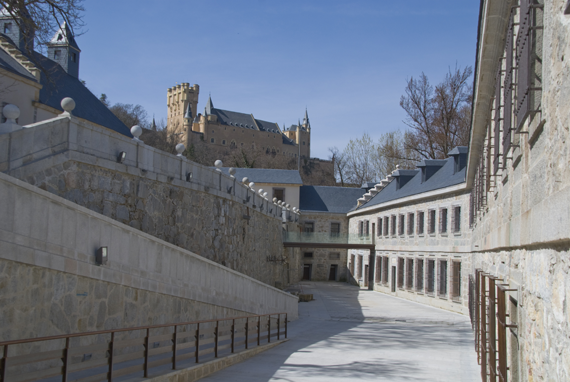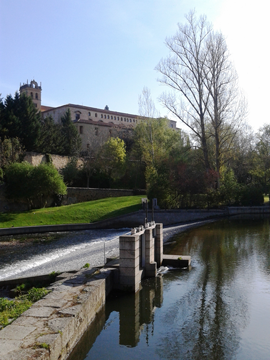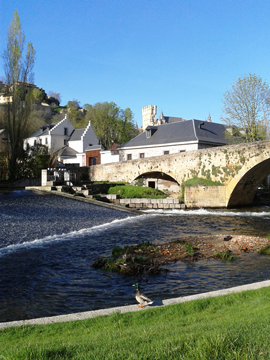The Royal Mint is located in a place of incomparable beauty, outside the city walls, in the Eresma Valley – declared Picturesque Landscape in 1947 -. Near the Santa María del Parral Monastery, it offers lovely views to the Alcázar.
This privileged location was chosen by King Philip II in 1583 to place his new and innovative Mint. The works to erect the building took place from 1583 to 1588 following the plans designed by Juan de Herrera.
In collaboration with German building engineers, Juan de Herrera designed a pioneer manufacturing plant which is nowadays renowned as the ancient sample of industrial architecture in Spain. The complex is articulated through two courtyards which, thanks to a wall decorated with the classical herrerian balls, bridge the slope. The building is characterised by its loyalty to the so-called “estilo escurialense” [herrerian style], with the simplicity of the lines dominating over the ornamental elements and the steep slate roofs. The great dimension of the complex, the biggest Mint House of its epoch, is a symbol of the monarch’s power.
At the beginning of the 17th century, the architect Francisco de Mora remodeled the foundry, substituting the wooden ceilings for brick vaults. The works by Francisco de Mora, disciple of Juan de Herrera, would preserve the aesthetics typical of herrerian architecture.
In the first half of the 18th century, during the Bourbon dynasty, some major alterations were executed; thus, flywheel minting (in Spanish known as “acuñación a volante o balancín”) was introduced. The first technological reconversion would imply important alterations in the building, all of them under the supervision of the royal architect Francisco Sabatini. He erected a new building for the flywheels, substituted the wooden channel for a stone one and carried out other improvement works.
Ferdinand VII ordered the last great work in the building in 1829, the monumental gate in the neoclassical style built by the architect Juan José Alzaga, one of the most outstanding examples of this style in Segovia.
After the centralization of coin minting in Madrid in the year 1869, the building was sold and, from 1879, it housed a flour mint for the subsequent one hundred years. Worth mentioning is the hydraulic system of the Real Ingenio, which we have inherited in a good state of preservation and which makes of this plant the most complete one of its age. The hydraulic infrastructure includes the waterwheel, overflow channels and the Sabatini channel. Owing to the preserved written records and historical plans, the wooden channels and three hydraulic wheels with their millraces have been reproduced.









